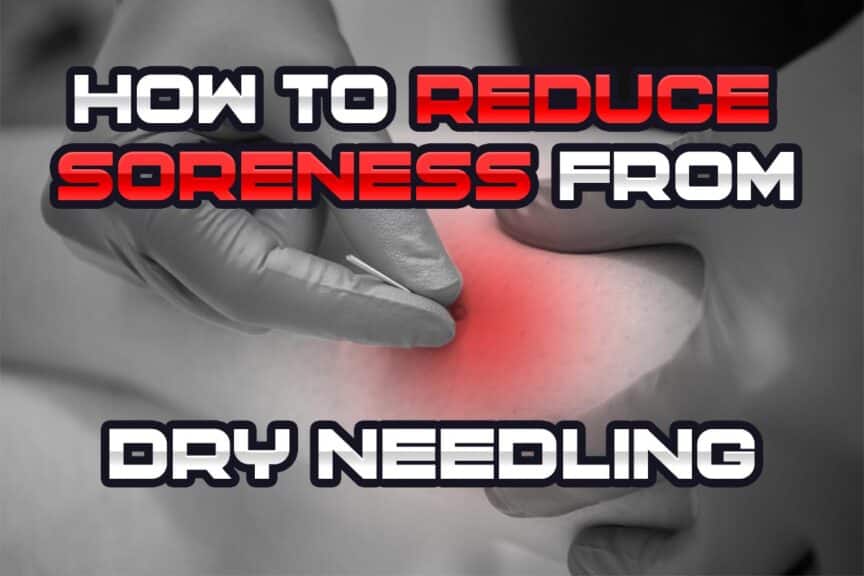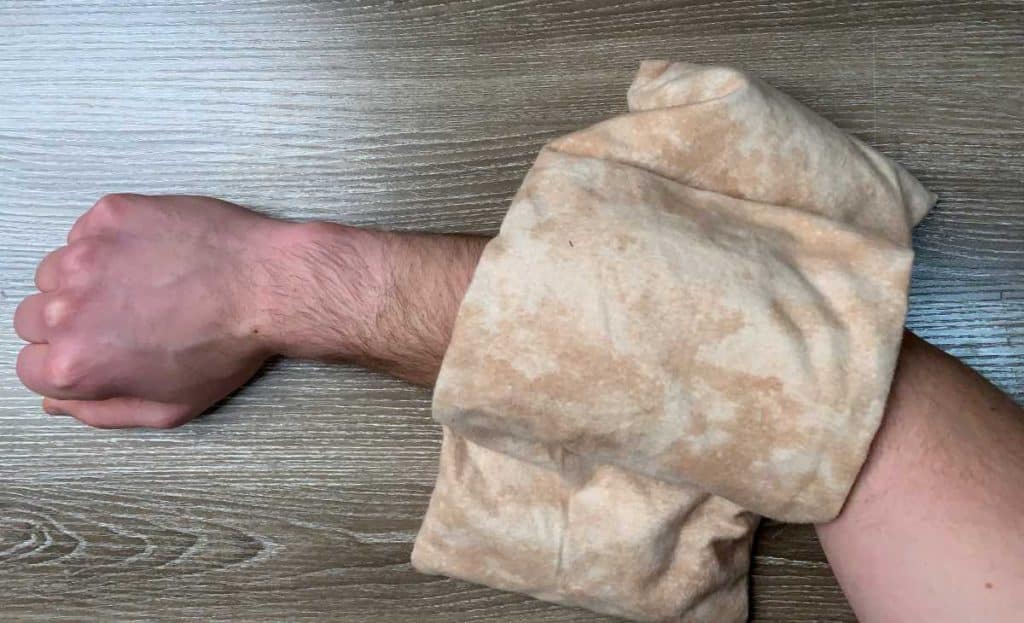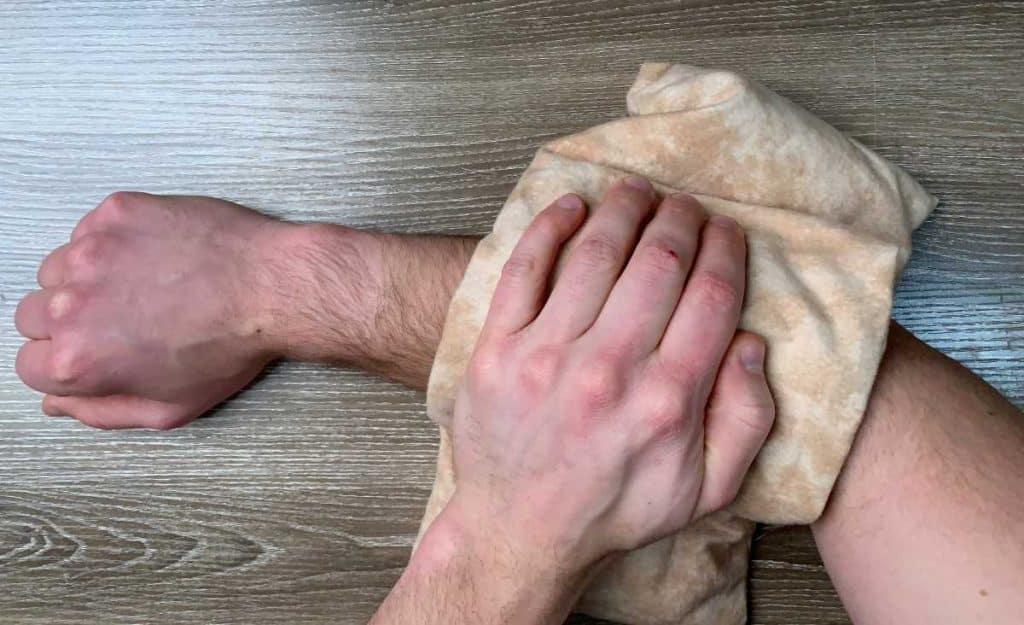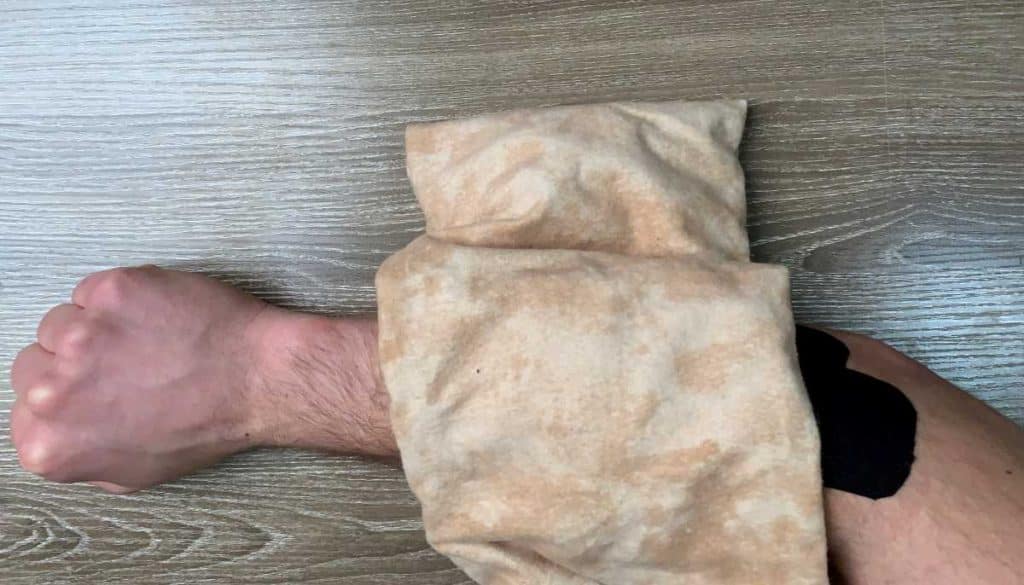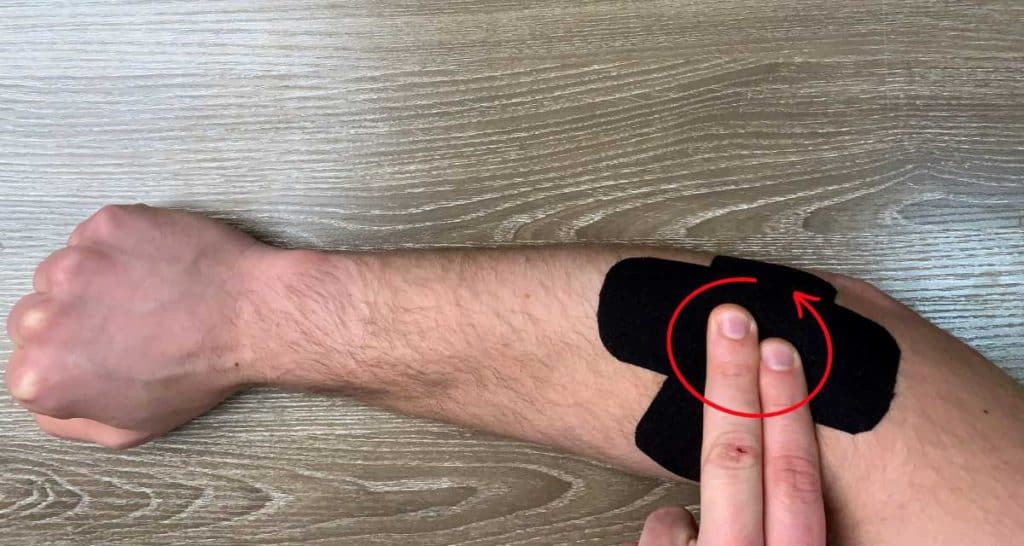Dry needling (often known as Intramuscular Stimulation, IMS, trigger point needling, among others) can be a great therapeutic treatment intervention for helping tight, painful and otherwise misbehaving muscles settle down and relax. But oftentimes people experience some aching or soreness for a short period of time thereafter. Thankfully, it doesn’t last long and there are some great things you can do to minimize the post-treatment soreness.
The best ways to decrease soreness after a dry needling session involve a combination of performing gentle movement while applying one or more pain-relieving applications to the treated area. These can include heat, Kinesio tape, a TENS machine, self-massage or certain combinations of these interventions.
If you’d like to learn more about the specifics of these various ways that can help reduce post-needling soreness, then keep on reading as I’ll be covering each one in detail!
Article overview (quick links)
Click/tap on any of the following titles below to jump directly to that section.
- Why do we get sore after dry needling?
- Constant movement decreases soreness
- Tip 1 – Use heat to help alleviate pain and discomfort
- Tip 2 – Use TENS to block out pain and discomfort
- Tip 3 – Apply Kinesio tape to decrease pain
- Tip 4 – Try self-massage for decreasing soreness
- Tip 5 – Combine different approaches for maximal effect
- Concluding remarks
Related Article: Can (and Should) You Workout Right After Getting Dry Needling?
Why do we get sore after dry needling?
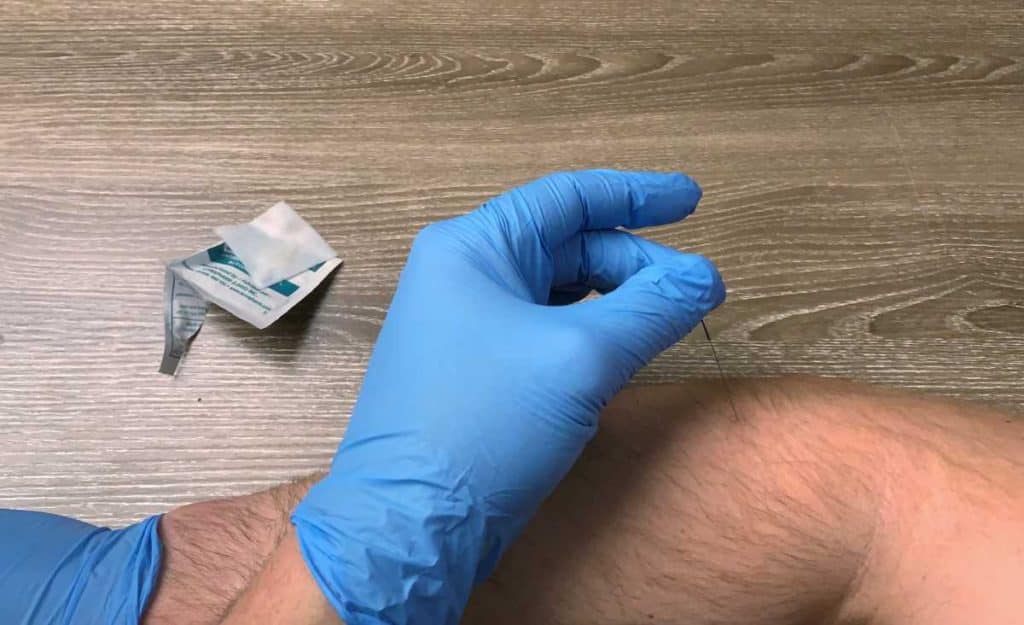
The sore, aching feeling that we can experience after having our muscles released from dry needling is likely due to the excessive amounts of fatigue that the treated muscles undergo once a twitch response has been elicited from the muscle by the filament/needle. The greater the twitch response the greater amount of fatigue that the muscle tends to experience. Thankfully, this fatigue and subsequent soreness doesn’t typically last for more than a few hours.
In addition to generalized muscle fatigue, there are likely other complex neurological and chemical responses that take place at the tissue and cellular level, however they are far beyond the scope of this article.
So now that we have discussed why the treated muscle(s) become sore, let’s now look at what we can do to reduce it and eliminate it as quickly and effectively as possible.
Constant movement decreases soreness
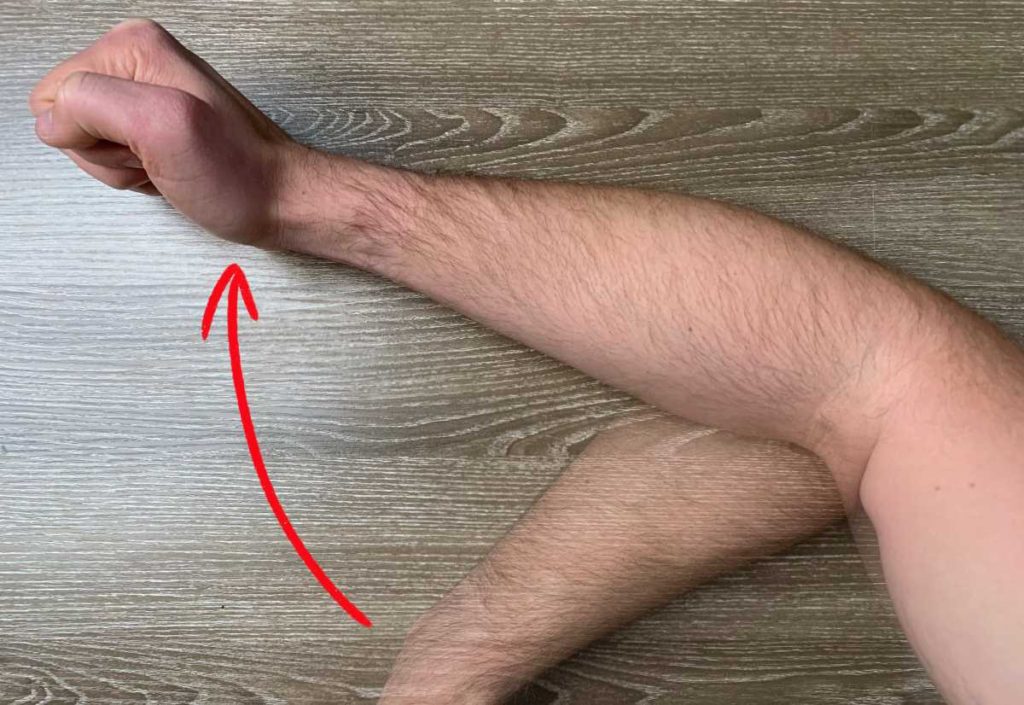
One of the best things to do when it comes to decreasing post-needling soreness is to simply perform gentle, pain-free movements on a regular basis for the area that was needled. Doing this for the first hour or so can help decrease aching and discomfort much more than keeping the area still and motionless.
This discomfort-reducing movement phenomenon is largely due to the treated area receiving a heightened level of blood flow that occurs with physical movement. This is sometimes referred to as the skeletal muscle pump; when muscles physically contract and relax, they pump blood in and out of them, just like the heart (but to a much lesser extent).
This allows for an exchange of chemicals, metabolites and other substances that have built up within the muscle after it has been needled. By removing these substances from the muscle and bringing in fresh blood, discomfort felt within the muscle(s) can be greatly reduced.
Muscles also tend to stay warmer when we move them due to the elevated blood flow moving through them. Keeping muscles warm with movement will help them stay relaxed and can decrease stiffness and discomfort as a result.
Tip 1: Use heat to help alleviate pain and discomfort
Speaking of muscle warmth, another great intervention to use is heat. A heating pad or other warm device over the treated muscle(s) can greatly help in a couple of ways:
The first way is through further elevating blood flow to the treated area(s) in addition to the movement mentioned in the previous section. Heat opens up our blood vessels (by making them expand in diameter). This means more blood flow coming in and out of the treated area(s), which results in a greater removal rate and extent of the pain-generating chemicals and substances that can be within the muscles after treatment.
Heat and warmth also distracts our brain from the pain singles that are being brought to the brain from the muscles themselves. This is because the types of nerves that relay information to our brain about heat and warmth travel on a different tract than the nerves that tell the brain about painful signals coming from the muscles.
This “pain distraction” is known as the gate control theory, where the sensations of heat and warmth override the signals coming to the brain that are carrying information about pain. (This is exactly how TENS machines achieve their pain-relieving effects, which will be discussed in the following section.)
Tip 2: Use TENS to block out pain and discomfort
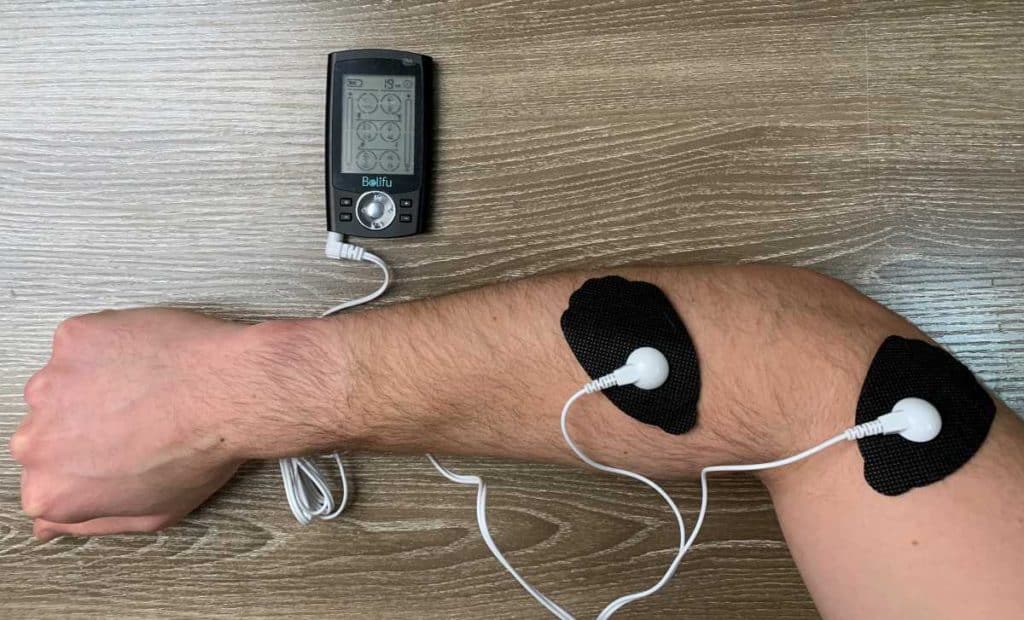
TENS stands for Transcutaneous Electrical Nerve Stimulation. A TENS unit is a small box that sends gentle electrical signals to electrode pads that are placed on the skin, typically over a sore or painful spot on the body. The electrical signals sent out from the TENS unit stimulate the nerve endings found within our skin.
When these nerves in the skin (known as cutaneous nerves) pick up on the electrical signals from the TENS unit, we feel a soft tingle or gentle buzzing sensation over the stimulated area. These cutaneous nerves send this signal up to the brain on a separate neurological pathway (known as a tract) than the pain signals being sent up to the brain from the sore or aching muscles beneath the skin.
The brain doesn’t really know how to handle these two different signals at once, so it gives attention to the buzzing or tingling sensation from the skin more so than from the achy or sore muscles. This phenomenon is known as the gate control theory. (Click this link to read the Physio-pedia article describing it in further detail).
As long as the TENS unit is on, significant relief of pain and discomfort can take place. TENS machines are incredibly simple and straight-forward to use. If you’re looking for a good TENS unit, I’d personally go for the Belifu Dual Channel TENS unit (link takes you to Amazon). This unit has a great list of features at a very affordable price. Disclosure: Purchasing through this affiliate link won’t cost you anything extra, but it will provide me with a small commission that I use to offset the expenses of running this website.
Medical disclaimer: There are certain conditions and times as to when you should not use a TENS unit, which are beyond the scope of this article. If you have any uncertainty as to whether or not a TENS unit is appropriate for you, be sure to talk to a medical professional.
Tip 3: Apply Kinesio tape to decrease pain
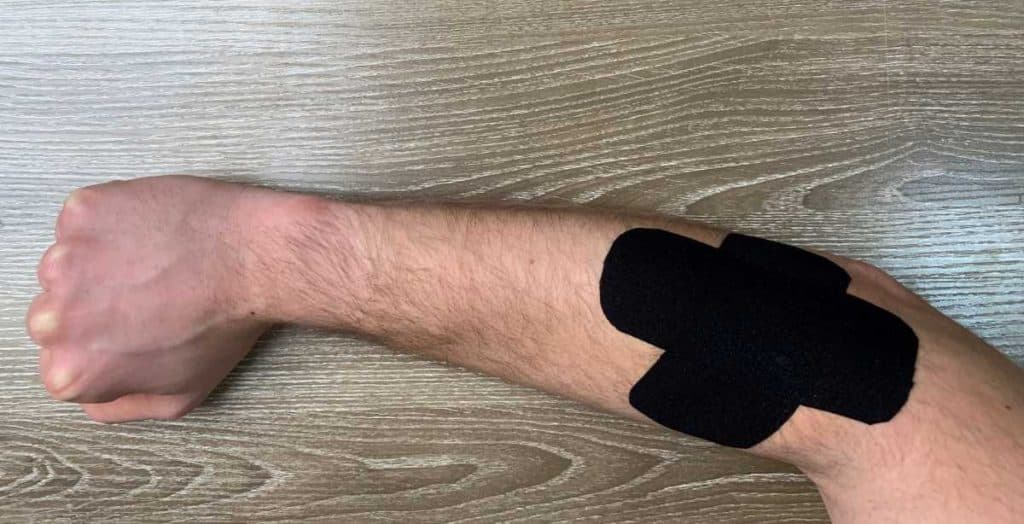
Kinesio tape has a solid reputation in the healthcare world for decreasing sensations of pain and soreness arising from muscles. Kinesio tape is a therapeutic type of tape that has elastic properties to it, allowing it to stretch and contract.
Related: Seven Easy Ways for Making Kinesio Tape Stick WAY Better
If you’re curious about some of the pain-reducing effects of Kinesio tape established in scientific literature, you can click on any of the following links which will take you directly to the scientific articles:
- The Kinesio Taping Method for Myofascial Pain Control
- Evidence for Kinesio Taping in Management of Myofascial Pain Syndrome: A Systematic Review and Meta-Analysis
- Comparison of effectiveness of Transcutaneous Electrical Nerve Stimulation and Kinesio Taping added to exercises in patients with myofascial pain syndrome
When applied to the skin correctly (over the sore spot where the muscles are underneath), a couple of things happen that can help to reduce pain and discomfort.
Just like heat on the skin as well as a TENS unit, the sensation of tape on the skin can essentially give your brain something else to think about besides the aching and discomfort it is being informed of from the muscles. Once again, this is due to the gait control theory for pain, as described in the previous two sections.
Related: Tennis Elbow: How to Tape Your Elbow All By Yourself
However, unlike heat or TENS, the elastic properties of the Kinesio tape can help to separate or lift apart the tissue layers beneath the skin when applied properly. By slightly separating the layers of tissues beneath the skin, fluid and blood flow are enhanced, which can potentially have pain relieving characteristics in addition to distracting the brain from pain due to the sensation of tape being on the skin.
Tip 4: Try self-massage for decreasing soreness
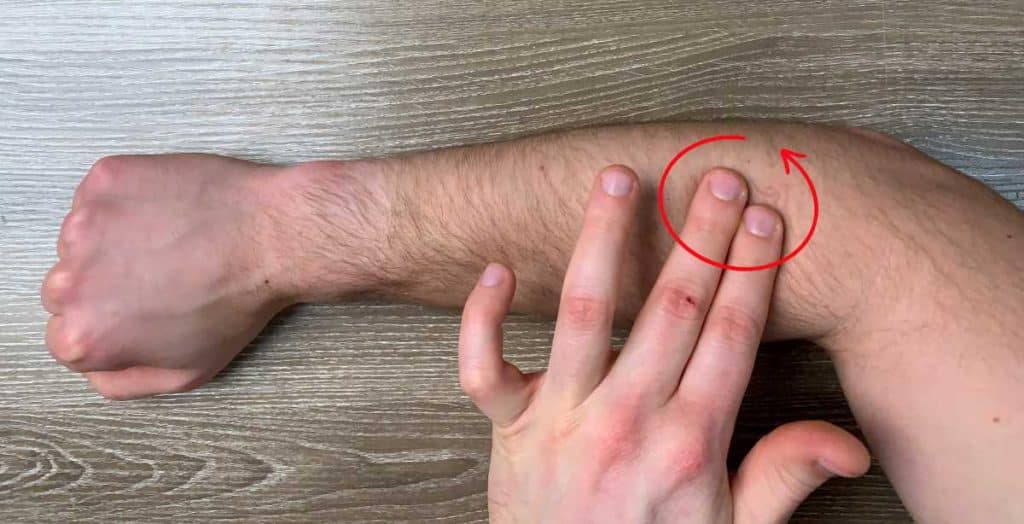
If you’re finding that you’re not up for using heating pads,TENS, tape or any other external devices, self-massage is always an option, and a great one at that, so long as it’s an area of your body that you can easily get at.
Gentle, self-massage carries all the properties of pain-relief that the aforementioned modalities do. Gently rubbing the skin activates the gate control for pain (described in the sections above) while also serving to keep the tissues beneath your hand warm while also enhancing blood flow to the muscles you’re gently massaging.
Related article: The Seven Best Ways to Massage Your Calf Muscles All By Yourself
There’s no need to get aggressive with your massaging, as it likely won’t help. Rather, you’re best to do gentle to mild massage for a few minutes a couple of times per hour. Doing this for one or two hours could greatly help reducing any muscle aching that you’re experiencing after your dry needling rather quickly.
Tip 5: Combine different approaches for maximal effect
If you’re really wanting to knock out your post-needling soreness rather quickly, it may be a good idea to combine some of the above strategies together. Keep in mind, however, that some simply can’t be paired together; combining Kinesio taping with TENS likely won’t work since you can’t use electrodes over tape.
But you may have success if you combine gentle movement while wearing a TENS unit or while having Kinesio tape applied over the sore area. Or you may want to try heating the tender area and then doing gentle massage over the area. As they say, there’s more than one way to skin a cat.
Concluding remarks
Not everyone experiences muscle soreness or aching after dry needling. When it is experienced, however, it can be a bit annoying or unnerving since it may not seem at first like the needing has helped at all. Thankfully most people who do experience soreness or tenderness from dry needling only experience it for up to a few hours after the treatment; it is quite transient and dissipates rather quickly.
If you’re wanting to do all that you can to avoid or eliminate any post-needling soreness as quickly as possible, keep in mind that there’s plenty of strategies you can try, including the ones covered in this article. Dry needling is a great way to quickly “reset” muscles and get them to behave again, so if you give it a try and then find yourself sore after the treatment, you now know some great ways for how to minimize it and eliminate it as quickly as possible.
Move well. Live bold.
-Jim

Hi! I’m Jim Wittstrom, PT, DPT, CSCS, Pn1.
I am a physical therapist who is passionate about all things pertaining to strength & conditioning, human movement, injury prevention and rehabilitation. I created StrengthResurgence.com in order to help others become stronger and healthier. I also love helping aspiring students and therapists fulfill their dreams of becoming successful in school and within their clinical PT practice. Thanks for checking out my site!

